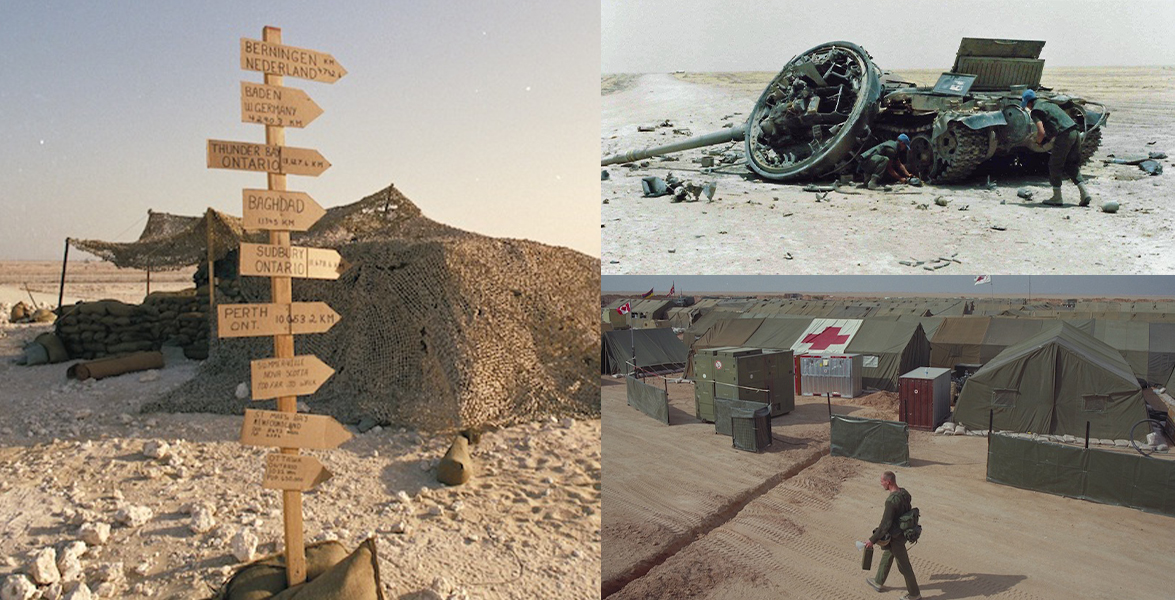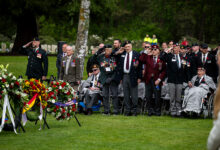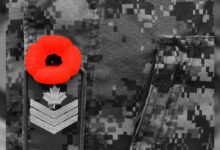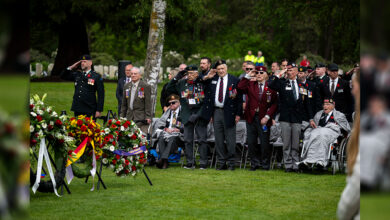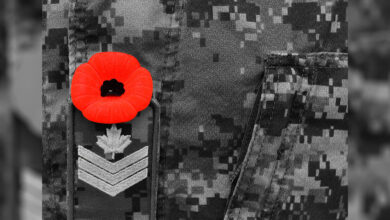While it has been 30 years since the Gulf War, a recent study concluded depleted uranium played no role in the development of Gulf War illness, an illness 25 per cent of Gulf War veterans suffer with.
Back in 1990, the international conflict was triggered by Iraq’s invasion of Kuwait on August 2, 1990. More than 5,100 Canadian Armed Forces personnel served in the Persian Gulf region between 1990 and 1991 with the collation.
During the conflict, Canadian soldiers, sailors, and aviators participated actively. Canada’s contribution was a headquarters, a naval task force, an air task group, a field hospital, two infantry companies, and a platoon that provided security. Canadian military personnel continued to serve in peacekeeping and embargo-enforcement efforts in the area after the war.

After the war ended, approximately 25 per cent of troops who served in the war started developing Gulf War Illness (GWI), also known as Gulf War syndrome. The chronic multi‐symptom illness’ cause has yet to be proven. Some of the symptoms include fatigue, night sweats, memory and concentration problems, diarrhea, sexual dysfunction, and chronic body pain.
UK Professor & U.S. Doctor work together
Research at the University of Portsmouth, conducted by Professor Randall Parrish at the University of Portsmouth, UK, and Dr. Robert Haley, of the University of Texas Southwestern Medical Centre in Dallas, tested U.S. Gulf War illness sufferers to examine levels of residual depleted uranium in their bodies and their study proves conclusively, and, for many, surprisingly, that none of them were exposed to any significant amounts of depleted uranium.
“People didn’t know what GWI was at first because it was an unusual group of symptoms that would not normally arise from being deployed into a conflict zone. There was quite a lot of interest in this in the 1990s, and various governments decided to look into this,” informed Parrish.
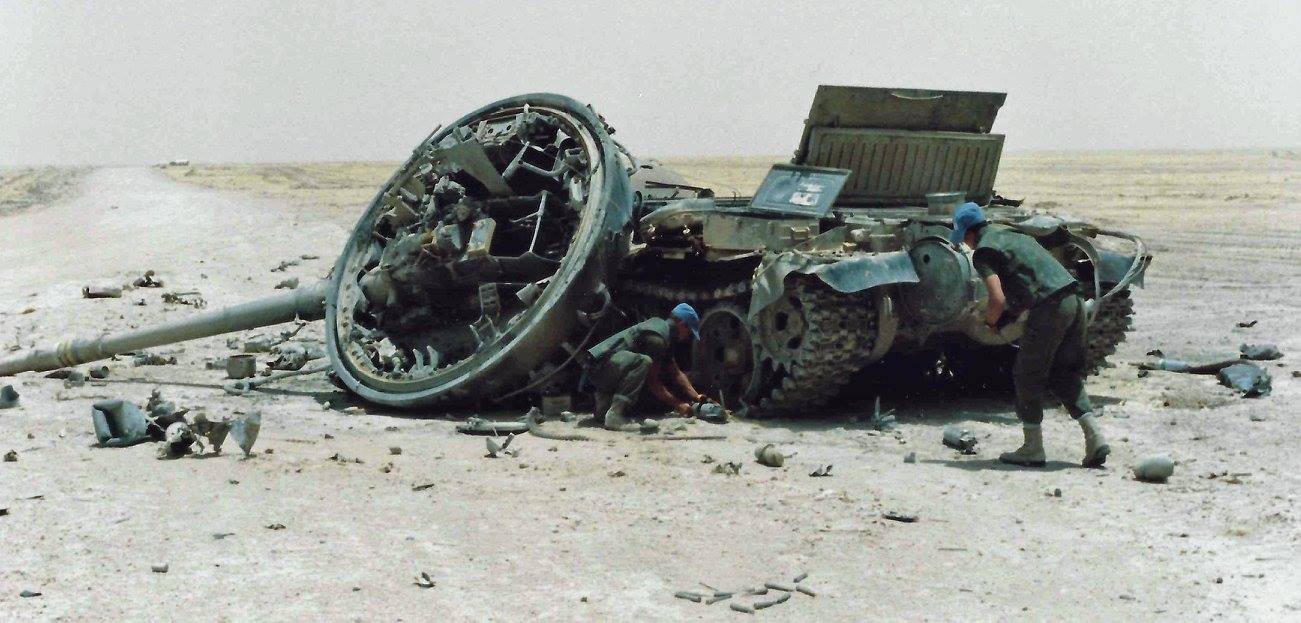
Depleted Uranium: First Time Used
For the first time, during the Gulf War, allied forces, particularly the U.S., but Britain, as well, used tanks whose munitions included depleted uranium projectiles.
The munitions are made of solid uranium metal. After they’re fired, they partially combust, burn, which creates lots of fine oxide particle dust that settles on the ground. The wind then stirs it up, which has caused concern over the years that the breathing in this material and its exposure could be a contributing factor to the illness.
Depleted uranium was thought to be, in the 1990s, a real credible cause, but from about the early 2000s, most people thought it could still be a hazard, but it’s not likely to be this.
The reason that 25 per cent of all the soldiers are ill would have to have been more evenly spread and dispersed across all the bases and in higher doses in order to be perhaps a serious consideration as a cause of the illness.
However, depleted uranium couldn’t be ignored as a possibility as it had never been eliminated as a contributing factor. Every single sample tested by Parrish had normal uranium.
“The conclusion of our work was that I measured 154 samples, and they were all the same in a way. It’s not very interesting until you sit back and look at the conclusion of the whole study, because it allows you to say that these people never had any significant dose of depleted uranium inhalation,” said Parrish.
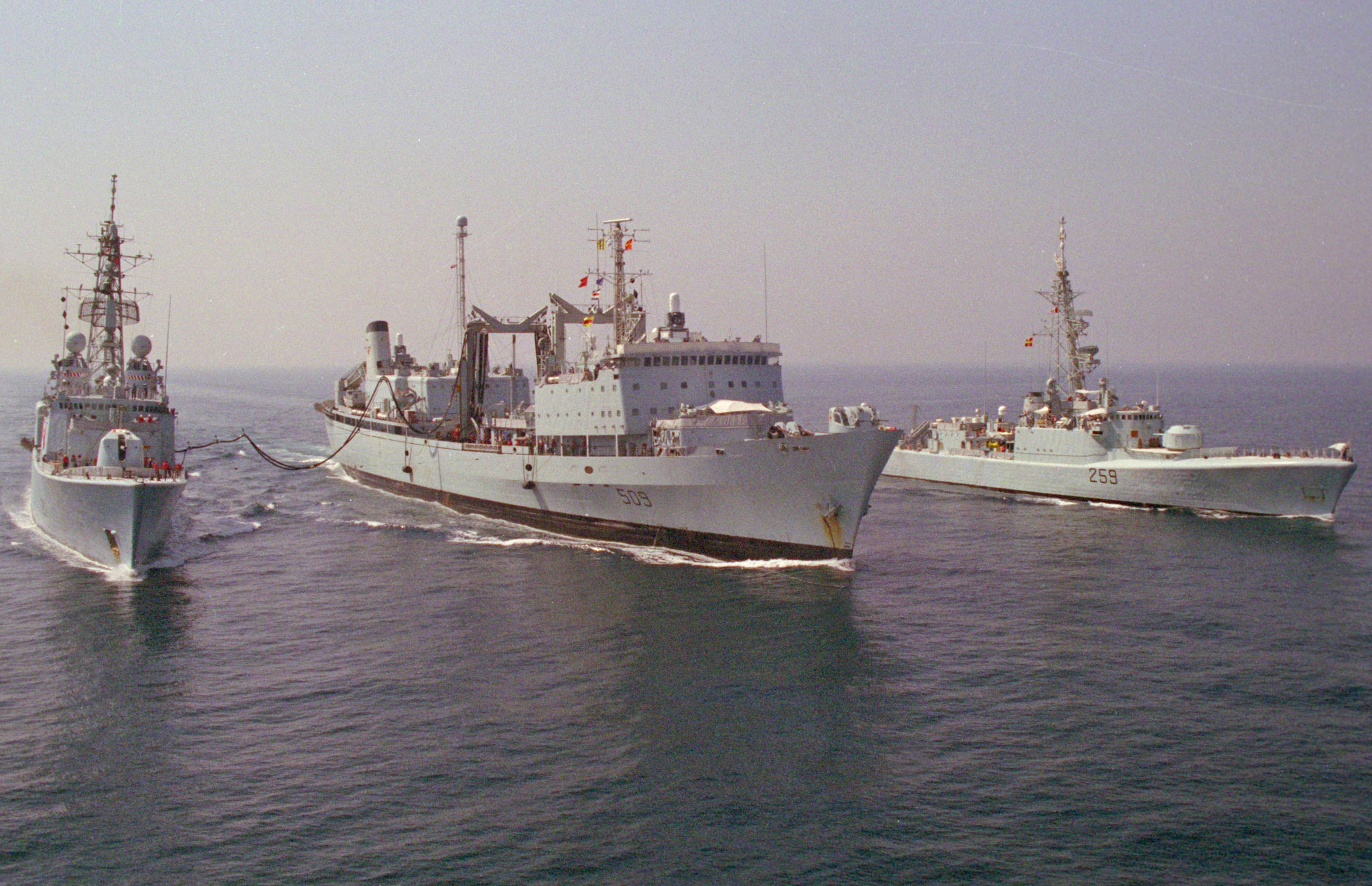
19 Years Later
While the war happened in 1991, and the urine samples were taken in 2010, which is 19 years later. This caused a challenge for the researches, which was predicting if the soldiers was exposed to depleted uranium back in 1991 with a certain dose. And how much should be expected to be found in urine at that point in time.
“We thought if we try to test with these people for the signature of depleted uranium in their urine, and we find it, then there might be a correlation with one or more of these symptoms. We might be able to advance the medical aspect. On the other hand, if we found there was no depleted uranium whatsoever in any of these soldiers, then we can probably rule that option out,” Parrish explained.
He noted there are a lot of Canadian soldiers suffer from GWI. According to Veterans Affairs Canada, there has been three studies done in Canada.
However, “no causes for medically unexplained Gulf War illness has been proven in extensive worldwide research. As they age, Gulf War Veterans will develop health conditions that occur with aging, which complicates matters. Research into possible causes is ongoing, primarily in the United States, where there are much larger numbers of U.S. Gulf War Veterans,” stated VAC’s website.
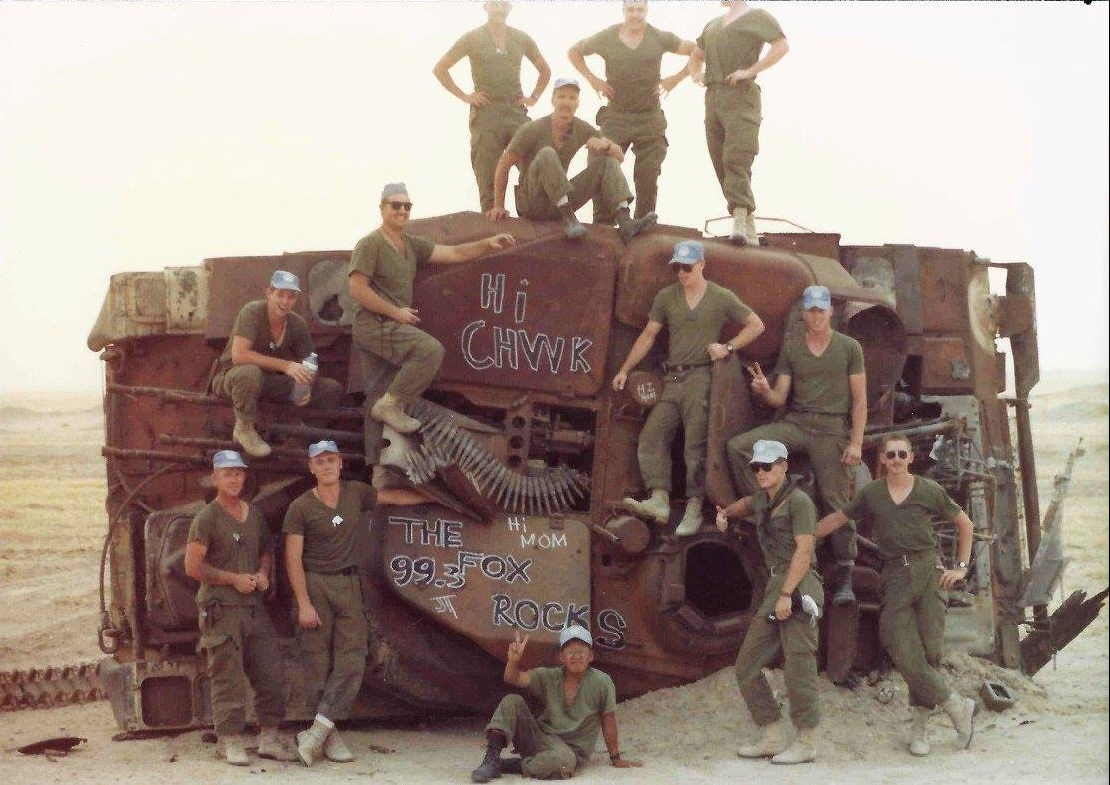
Iraq in 2003: Military Personnel didn’t Develop GWI
Research has been ongoing to find a cause, as it has puzzled many people. When looking at the subsequent conflicts, such as the war in Iraq in 2003, military personnel did not develop Gulf War illness. They may have had other military service issues such as chronic fatigue or post-traumatic stress, but not the abnormal combination of GWI symptoms.
“Something about the Gulf War illness was unique to the Persian Gulf conflict, and that’s an interesting fact that needs to be reconciled with whatever the explanation is for how you perhaps might approach treating people,” says Parrish.
Dr. Hayley is an American medical researcher and epidemiologist, one of his interests within the field has been the fate of Gulf War veterans. He’s been studying Gulf War veterans for more than 25 years. He believes that something has made this happen that isn’t psychological.
“For a long time, Dr. Haley has viewed this as probably a result of some sort of exposure to toxic compounds, and a variety of toxic compounds are encountered in warfare in the Gulf war,” explained Parrish.
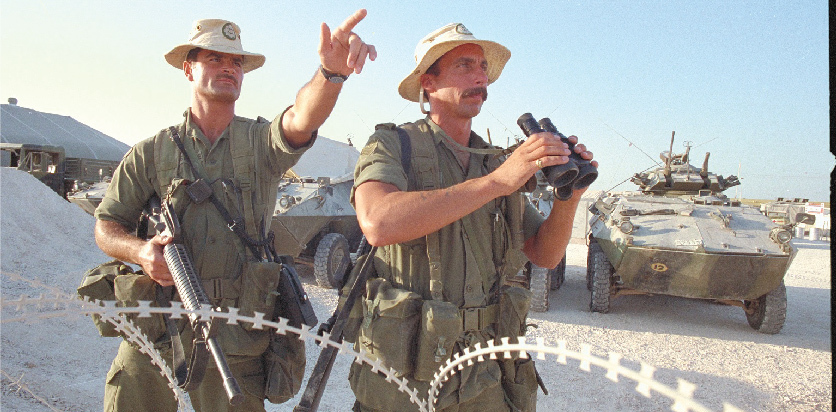
Other Explanations
High quantities of pesticides were used during the war and sprayed all over the bases to try to control insects and malaria. There were also worries regarding the fact Saddam Hussein had caches of nerve gas and the possibility of him using them against allied troops.
Most of the soldiers were inoculated by a combination of drugs created to prevent soldiers from developing symptoms if exposed to nerve agents.
On January 19th and 20th, 1991, an event took place where U.S. forces bombed two different supply depots with nerve agents inside them. Haley partnered with another scientist in Washington, DC, who was a Defense Intelligence Analyst and Meteorologist.
They conducted a study to look at the weather when the nerve gas caches in Iraq blew up. The research shows the weather patterns were consistent with this plume of sarin nerve gas going high up in the middle atmosphere, being carried downwind, and then overnight cooling off and settling in the ground layer.
It settled in the ground layer in Southern Iraq and Kuwait. The nerve gas alarms, which were located at several places on the bases, went off several days over a wide area.
Parrish says, “it’s plausible epidemiologically. Obviously, if an alarm is going off, it’s above some threshold, and you should start to worry. It’s just like a smoke alarm. It’s not just a trivial amount.”
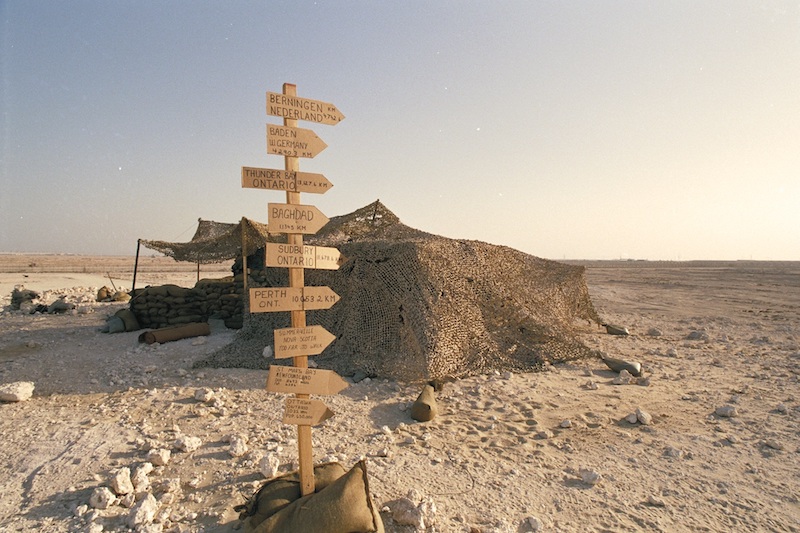
Photo: Department of National Defence IWC90-409-28.
Proposing the Evidence of Sarin Gas: Controversial Conclusion
U.S. authorities initially discounted this explanation, and Parrish explained that proposing the evidence of sarin gas being a plausible cause is a controversial conclusion to reach.
When Dr. Haley’s subjects came to his hospital, he would undertake detailed tests. These would be brain scans and CT scans, looking at the way the brain functions.
“When he did this with people who were Gulf War illness positive people had abnormal abnormalities in their brain. Haley compared that to other medical evidence, and he suggested that it looks like given these symptoms and these images, you might say defects in the brain scans,” says Parrish.
This may suggest there could be a nerve transmission problem in the body, a neurological brain dysfunction of the nerve transmission signals. This could cause a number of the symptoms that have been observed.
According to VAC website, “Although research into causes is still under way, experts have recommended a shift toward research aimed at supporting the health of Gulf War Veterans. The U.S. government is funding research trials for treatment of Veterans with Gulf War illness.”
To read the study visit here.


